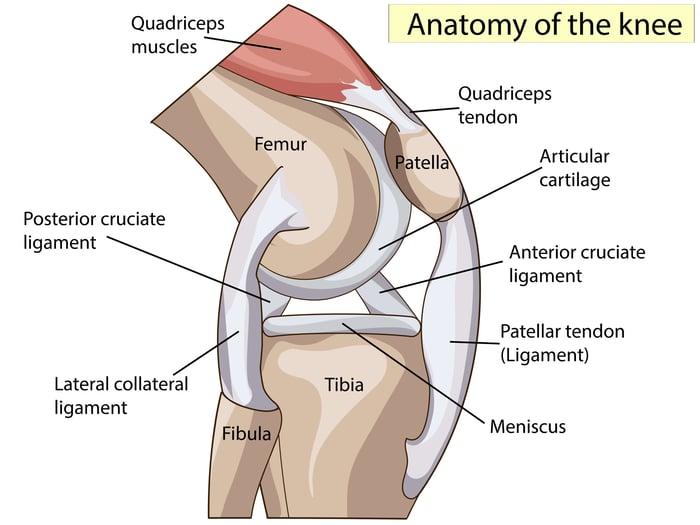Meniscus Tear Recovery: How Can Physical Therapy Help?

Licensed Physical Therapist, PT, DPT // Dry Needling Certified // EW Motion Therapy Trussville
Knee injuries are common for anyone, from high-level athletes to anyone who steps off a curb wrong. The joint structure is fairly complex - many tendons, ligaments, and other structures surrounding the joint keep it stabilized and moving fluidly. One of these structures is the meniscus; if you have never torn it before, you may not even know what it is. What does it do for the knee joint, and why can it be torn? And if you tear it, do you need surgery to fix it?
While more severe meniscus tears need to be surgically repaired, there are a few conservative treatments you could try first, including physical therapy. Our EW Motion Therapy team has seen many clients with knee issues over the years, and we understand how important it is to get back to your favorite activities. We can tailor a treatment plan to the severity of your meniscus tear and your lifestyle, so you can heal properly and restore function in your knee. Even if our services do not fit your needs, we want to educate you on meniscus tears and how physical therapy can help.
This article discusses the meniscus and its purpose in the knee, how meniscus tears can happen, and how physical therapy can help you recover without surgery. With this information, you can get the care you need for your specific injury and feel confident in your decision.
A meniscus tear is not the only thing that can cause pain in your knee. Learn more about other causes here.
What is the meniscus, and what does it do?
The meniscus is the name for two C-shaped pieces of cartilage that sit between your femur and tibia. Because the meniscus is cartilage and, therefore, more flexible, its primary purpose is to absorb shock between your knee bones and transmit weight across the joint during movement. A meniscus tear is one of the most common knee injuries since the meniscus absorbs the force that could impact other bones and ligaments in the knee. Here is a diagram showing where the meniscus is within the structure of the knee joint.

How do meniscus injuries happen?
Most meniscus tears occur while playing sports, either in contact sports like football or in non-contact sports like soccer. Many sports require movements like twisting and quickly pivoting, and if you do one of these movements too fast, you’re more liable to tear your meniscus. If you feel an abnormal pop in your knee that causes swelling, stiffness, and buckling or catching of the knee joint, you have possibly torn a part of your meniscus. There are a few different types of meniscus tears, including bucket handle, flap, radial, and degenerative tears that occur due to wear and tear over time.
How can physical therapy help you avoid meniscus repair surgery?
Whether you can use a conservative treatment method like physical therapy for a meniscus tear depends on the severity, type, size, and location of the tear, as well as the age of the client. If the tear occurs within the outer third of the meniscus, there is a higher chance that it could heal on its own because that area has a better blood supply. However, if the tear is in the inner part of the meniscus and a conservative treatment approach does not work, then surgery may be required.
Most degenerative meniscus tears, especially, can heal with physical therapy. In 4-8 weeks, you can work with a physical therapist to reduce swelling, restore your range of motion, improve muscle flexibility and strength, and ensure proper gait patterns and balance. Also, to prevent excess stiffness as your meniscus heals, your physical therapist will give you mobility exercises for your hips and ankles. You can also go to physical therapy after a meniscus injury depending on the surgical protocol. When you are cleared to put weight on your knee, a physical therapist can help reduce inflammation and scar tissue by keeping the joint moving.
How else can physical therapy help pre- and post-op?
Now you know more about how physical therapy can help you recover from a meniscus tear or meniscus surgery. Physical therapy before and after a major procedure can help you prepare well and maintain as much mobility as possible during the healing process. Safe movement will help reduce the buildup of scar tissue and help you heal more effectively from shoulder replacements, other knee surgeries, ACL repairs, and more.
A meniscus tear can feel like a serious roadblock, whether you are a young athlete pursuing a professional career or a retired tennis player who just wants to play at a country club with friends. But, with the right physical therapist in your corner, you can continue to move and return to your favorite activities once you heal. We enjoy helping our EW Motion Therapy patients return to sports and activities they love - it brings us joy as well. If you are curious about what else physical therapy can do for you, download our answers to 20 frequently-asked physical therapy questions.


